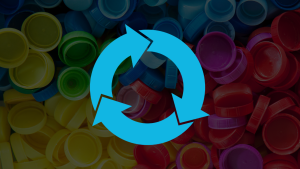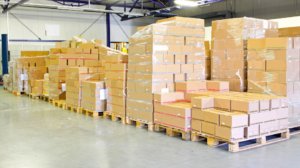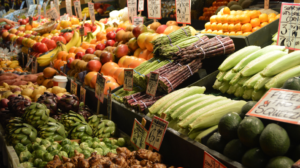How a molder uses ocean plastics in flower pots
A polypropylene planter producer has begun molding with marine plastics, after the company and its suppliers overcame melt flow and color consistency challenges.
Bloem on April 7 announced that Lowe’s has begun selling its Ocean Series of pots, which contain 25% marine plastics and 75% post-consumer natural PP collected through traditional recycling channels. The Ocean Series is expected to consume at least a million pounds of post-consumer plastic per year.
Based in Hudsonville, Mich., Bloem molds pots at a factory in Apopka, Fla., near Orlando. Bloem is a mid-sized planter manufacturer producing about 25 million pots a year.
Ryan Mast, company president and co-founder, said using plastic from marine sources differentiates his company in the flower pot industry, where, he acknowledged, “there’s not a ton of innovation.” Producers can change pot colors, shapes and sizes, but to truly revolutionize the industry and do something different, Bloem took up the environmental cause of recycling waste material into long-lasting products, Mast said.
But the Ocean Series didn’t come without challenges. In an interview, Mast explained how molding with the material presents difficulties and why it’s worth the effort.
Eye toward color consistency
The ocean plastics feedstock originates as discarded packaging, crates, baskets, buoys and other items on shorelines in Canada, the Dominican Republic, Haiti and Mexico, according to a press release. The plastic includes material that is both “ocean bound,” or at risk of washing into the sea, and “ocean found,” or already floating on the water, according to Bloem.
“We’d be hungry to get 100% ocean-found material at some point,” said Mast, who started the company in his home in 2012.
The plastic is baled and shipped to a reclaimer in the U.S., where it’s processed into pellets. Mast said he wasn’t able to disclose the reclaimer.
The Ocean Series is the product of three years of work. Melt flow and consistent color were among the challenges Bloem encountered. Pots are typically produced in deep-core molds, with the plastic injected from the bottom. That means a high enough melt flow is needed to form the plastic around the deeper draw, Mast said.
The marine plastics, however, have too low of a melt flow rating.
“We originally tried to work with 100% ocean plastic but the melt flow precluded us from being able to put it into our products,” Mast said. So Bloem started experimenting with mixing the ocean plastic pellets with post-consumer PP to boost the melt flow, he said.
Mixing the ocean plastic pellets with the white PP pellets is also important to achieve color consistency, which is of prime importance for Bloem’s Ocean Series pots. The series is currently available in an “ocean blue” color, ideal for marketing a product containing ocean plastics.



